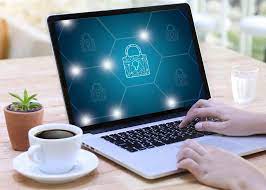As remote work becomes increasingly prevalent, ensuring secure access to company resources has never been more critical. Organizations must provide their employees with the ability to work effectively from anywhere while safeguarding sensitive information and systems from potential threats. IT services play a vital role in implementing and maintaining secure remote access solutions. In this blog, we will explore how IT services contribute to secure remote access and why it is essential for businesses today.

1. Assessment of Remote Access Needs
Before implementing secure remote access solutions, businesses need to assess their specific requirements. IT services can help by:
- Identifying User Needs: Evaluating which employees require remote access and determining the resources they need to perform their jobs effectively.
- Understanding Risks: Conducting risk assessments to identify potential vulnerabilities and threats associated with remote access, allowing businesses to implement appropriate security measures.
2. Implementation of VPN Solutions
Virtual Private Networks (VPNs) are a common method for securing remote access. IT services can facilitate the implementation of VPN solutions by:
- Selecting the Right VPN: Assessing different VPN options and recommending the best fit based on the organization’s size, needs, and security requirements.
- Configuration and Deployment: Setting up the VPN, configuring access controls, and ensuring it integrates seamlessly with existing systems.
3. Multi-Factor Authentication (MFA)
To enhance security, IT services can implement Multi-Factor Authentication (MFA) systems, which require users to provide multiple forms of verification before accessing company resources. This adds an extra layer of security by:
- Reducing Unauthorized Access: Making it significantly harder for unauthorized users to gain access, even if they obtain a user’s password.
- Streamlining User Experience: Implementing user-friendly MFA solutions that balance security with ease of use, ensuring employees can access resources without excessive friction.
4. Endpoint Security Management
With employees accessing company resources from various devices, managing endpoint security is crucial. IT services can help by:
- Device Management Solutions: Implementing Mobile Device Management (MDM) and Unified Endpoint Management (UEM) solutions that allow organizations to monitor and secure devices accessing the network.
- Security Protocols: Establishing protocols for device security, including encryption, antivirus software, and remote wipe capabilities to protect data in case a device is lost or stolen.
5. Secure Access Policies and Controls
IT services play a key role in developing and enforcing secure access policies, which include:
- Access Control Measures: Implementing Role-Based Access Control (RBAC) to ensure that employees only have access to the information and resources necessary for their roles.
- Policy Development: Crafting clear remote access policies that outline acceptable use, security practices, and consequences for violations, helping employees understand their responsibilities.
6. Continuous Monitoring and Threat Detection
IT services are essential in maintaining the security of remote access systems through continuous monitoring and threat detection:
- Network Monitoring: Implementing tools that continuously monitor network traffic for unusual activities or potential threats, enabling quick responses to security incidents.
- Intrusion Detection Systems (IDS): Deploying IDS to detect unauthorized access attempts or breaches in real-time, ensuring prompt action can be taken to mitigate risks.
7. Training and Awareness Programs
Human error is a significant factor in security breaches. IT services can help organizations combat this by:
- Employee Training: Providing training programs that educate employees about secure remote access practices, including how to recognize phishing attempts, secure passwords, and use company resources safely.
- Ongoing Awareness Campaigns: Regularly updating employees on emerging threats and best practices to foster a security-conscious culture within the organization.
8. Regular Security Audits and Updates
To maintain a secure remote access environment, IT services conduct regular security audits and system updates, which include:
- Vulnerability Assessments: Performing periodic assessments to identify and address security weaknesses in remote access systems.
- Software Updates: Ensuring that all software, including VPNs, firewalls, and endpoint security solutions, is regularly updated to protect against the latest threats.
Conclusion
As remote work becomes the norm, secure remote access is essential for maintaining business operations and protecting sensitive data. IT services play a crucial role in facilitating this secure access by implementing robust technologies, developing effective policies, and providing ongoing support. By leveraging IT services to establish and maintain secure remote access solutions, organizations can empower their employees to work from anywhere while safeguarding their critical assets from potential threats. Embracing secure remote access not only enhances productivity but also strengthens overall organizational resilience in an increasingly digital world.


No responses yet